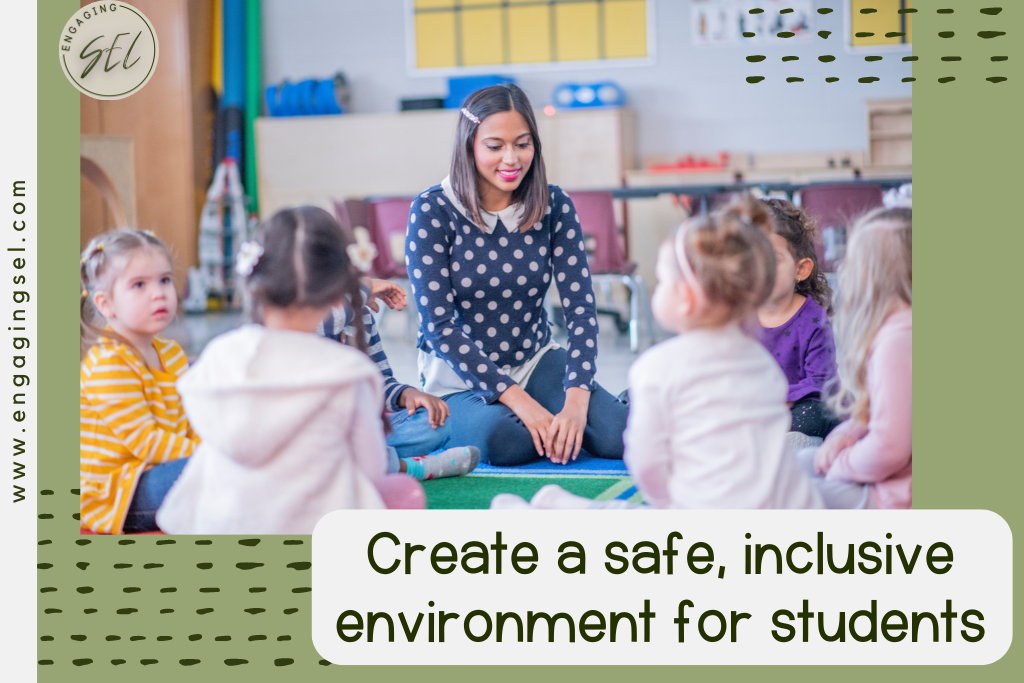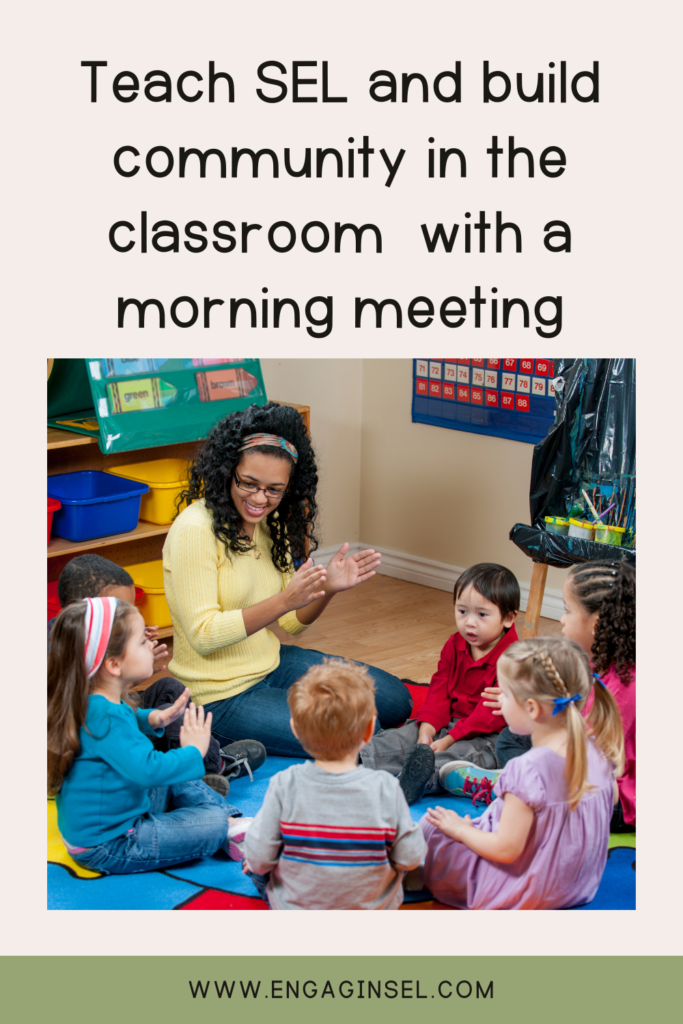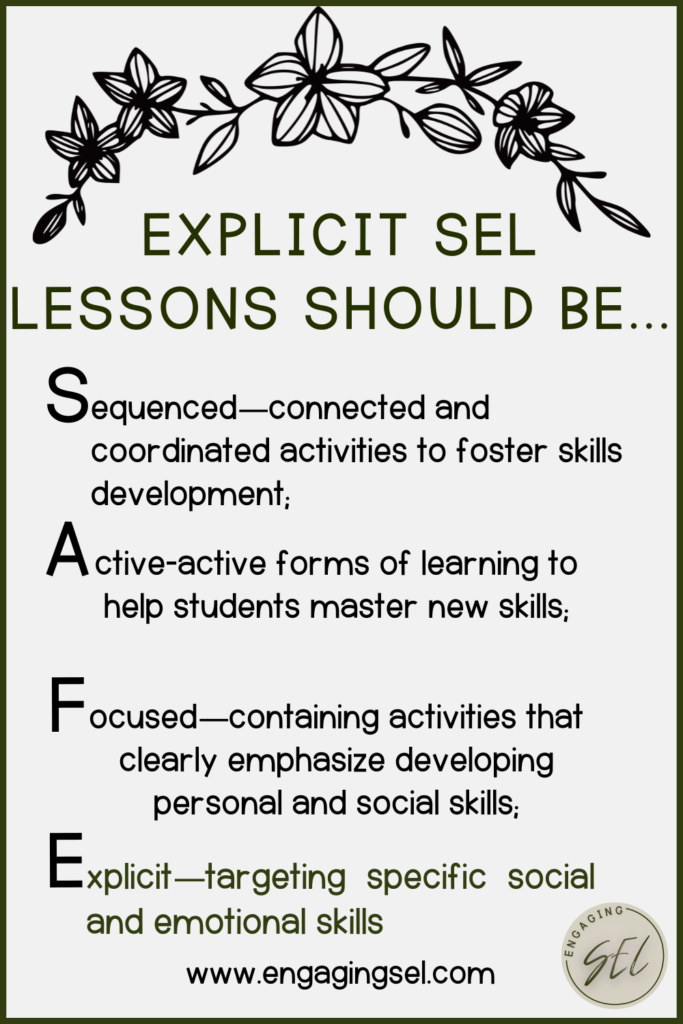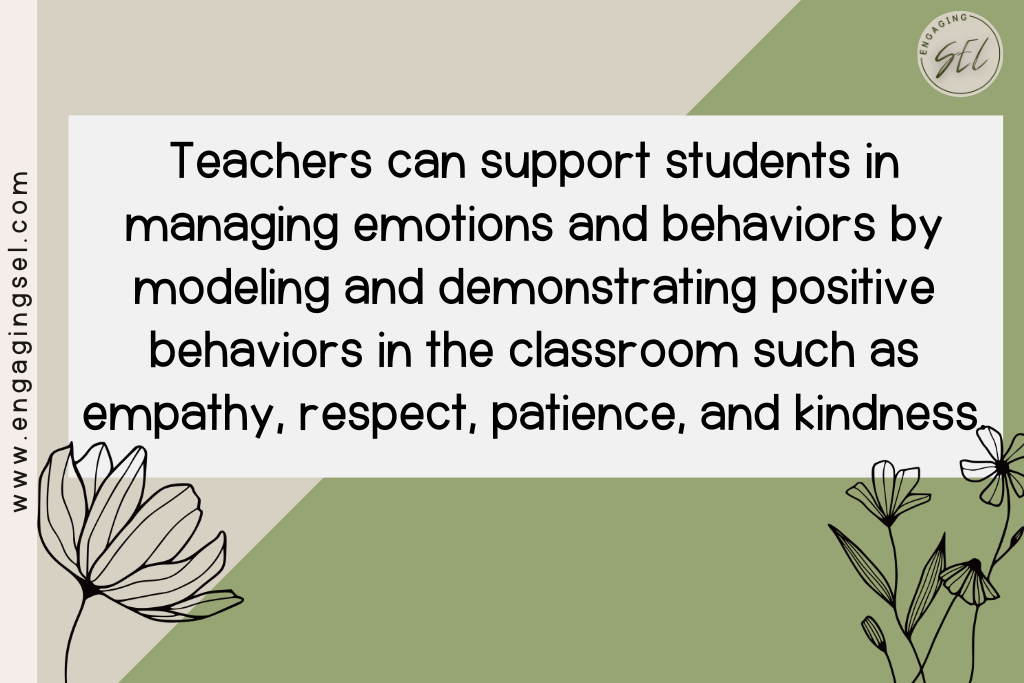Supporting the whole child through education includes teaching social and emotional skills in the classroom. Social Emotional Learning (SEL) is the process through which all young people and adults acquire and apply the knowledge, skills, and attitudes to develop healthy identities, manage emotions and achieve personal and collective goals, feel and show empathy for others, establish and maintain supportive relationships, and make responsible and caring decisions(CASEL, 2024). It is no surprise that more and more school districts and schools across the country are starting to incorporate SEL into their daily teaching practices. So what does that look like and what does teaching SEL include? This blog explores what teaching social-emotional learning looks like in an elementary classroom.
Safe, Inclusive Spaces
To build a strong foundation for Social-emotional learning in the classroom, teachers must start by creating a safe inclusive environment for students. Teachers model positive behaviors for students. Build positive caring relationships between teachers and students by making an effort to understand students; needs, identities, backgrounds, and experiences. Create a supportive classroom community by bringing students together. This can be done through daily check-ins, morning meetings, and class discussions. Creating class norms that everyone agrees to at the beginning of the school year can help set the stage for a collaborative, inclusive environment where everyone feels safe and included. Include a calm space where students feel comfortable and safe to manage their emotions. Creating an environment where students feel supported and safe to be themselves is the first step to successfully teaching social-emotional learning in the elementary classroom.

Integrate SEL Into the Daily Schedule
I have heard time and time again from teachers that they are not able to teach SEL because they have no time to add yet another thing to their busy daily schedule. But even if you don’t have a dedicated time in your schedule for SEL lessons, you can still teach students social-emotional skills every day. SEL can be incorporated into almost every single part of your day.
Morning Meetings
Morning meetings are a great way to teach SEL skills to students. A question of the day, community building, student discussions or a short game or song can all be a part of the morning meeting that allows you to teach components of SEL. Bringing students together in the morning can set the stage for the day Morning meetings create an opportunity for students to share their thoughts, feelings, and experiences, fostering a sense of community and belonging

Content Areas
A large part of SEL includes working with others such as problem-solving, teamwork, respect, conflict resolution, growth mindset and so much more. CASEL recommends cooperative learning and project-based learning as a strategy to integrate SEL into the classroom. There are endless ways to incorporate SEL into your regular daily instruction. Check out my free guide to incorporating SEL into the classroom for more ideas.
Brain Breaks and Mindfulness
Giving students short breaks throughout the day can help them regulate their emotions and manage stress. The brain breaks can also give teachers an opportunity to further teach SEL skills. Brain breaks can include small student discussions, games, or activities that teach students to use different SEL skills in a fun, engaging way. Brain breaks can also be used as another opportunity to build community and positive relationships.
Explicit SEL Intruction
CASEL shares that explicit SEL instruction refers to consistent opportunities for students to cultivate, practice, and reflect on social and emotional competencies in ways that are developmentally appropriate and culturally responsive. These opportunities provide dedicated time to focus on social and emotional competencies (CASEL, 2024). Effective SEL instruction includes four parts represented by the acronym SAFE:
- Sequenced—connected and coordinated activities to foster skills development;
- Active-active forms of learning to help students master new skills;
- Focused—containing activities that clearly emphasize developing personal and social skills;
- Explicit—targeting specific social and emotional skills

SEL instruction gives students opportunities to practice SEL skills with lessons specifically teaching skills from the five SEL core competencies: self-awareness, self-management, social awareness, relationship skills, and responsible decision-making. Not sure where to start? Check out my SEL curriculum designed for teachers to be easily incorporated into ANY classroom schedule.
Teacher Behaviors
How a teacher behaves in the classroom is incredibly powerful when it comes to teaching SEL. Teachers need to model the expected behaviors in the classroom such as respect, responsibility, emotional regulation, empathy, and patience. Students will be more likely to demonstrate these behaviors when they see a trusted adult showing them as well. Teachers can support the development of SEL in the classroom by providing students with tools and techniques for conflict resolution and problem-solving strategies when they use these strategies with the students. Think-alouds, or speaking thoughts and feelings aloud so students can hear, are another way for teachers to model the expected behaviors for students.

Partnering with Families
Effectively teaching SEL in the classroom requires a strong partnership with families. Establish a method of open communication with families and caregivers at the beginning of the school year. Find a method that works for you that is easy to use for both you and the families that also allows for frequent are regular communication. Read more about ways to improve communication with families here.
Some families may be unfamiliar with SEL and will want to know what you are teaching to their child and why. Start by explaining what you will be teaching and why it is necessary. Provide resources for the families to use at home to further their child’s SEL skills. When possible, invite the families into the classroom and involve them in class activities and events.
Conclusion
Incorporating SEL into the classroom gives students an opportunity to learn life skills necessary for positive outcomes in the classroom and in life. By fostering a safe, inclusive environment, integrating SEL into daily routines, providing explicit instruction, encouraging positive relationships, and partnering with families, educators can build a platform for teaching SEL in the classroom and by doing so, support students’ lifelong success.
Mindfully yours,
Alyssa from Engaging SEL


